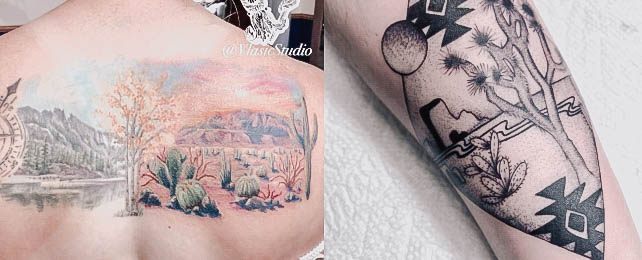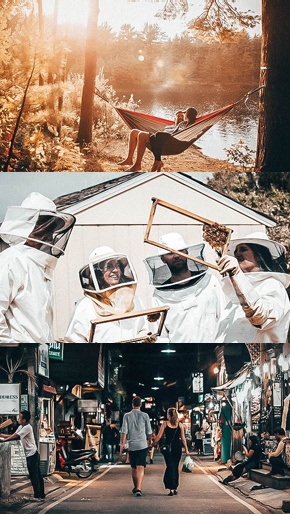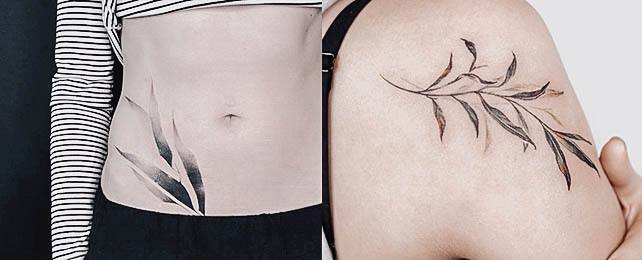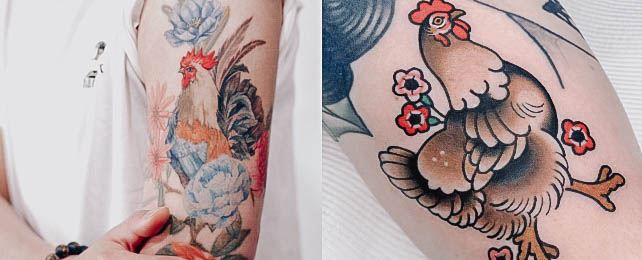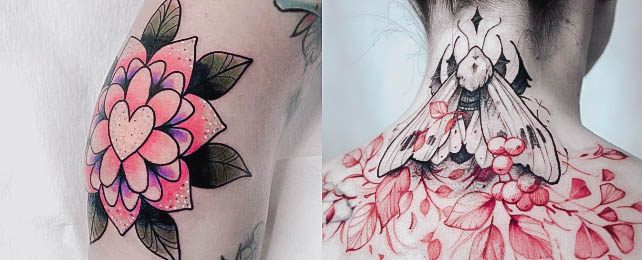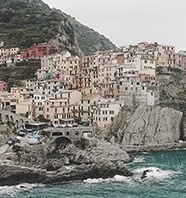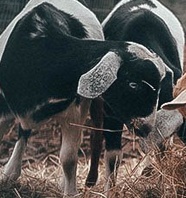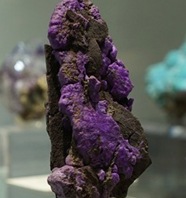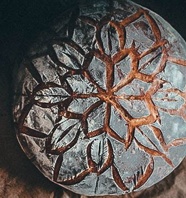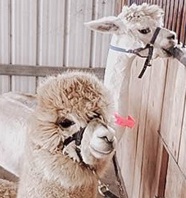Like the canvas of the body itself, the desert is a vast landscape where anything and everything can unfurl: a dramatic sunset and subsequent life-affirming sunrise, the richest of colors and dreams rendered surrealist, and all manner of memorable art and pop culture callbacks.
From realistically rendered cacti to Georgia O’Keefe-esque desert flowers, Spaghetti Westerns to Breaking Bad homages, the desert makes for truly limitless tattoo inspiration. An inked expanse of stars, cowboy silhouette, and howling coyote all call to mind the iconic aspects of desert life we all secretly long to capture in our own. And why not? A tattoo is nothing if not a declaration of our wildest dreams and heartfelt wanderings.
Who hasn’t secretly longed to retreat to a sun-baked hacienda, earthen adobe or lantern-lit kasbah when the repetition of day-to-day living leaves something to be desired? What better way to remind yourself of the infinite and awe-inspiring you hold within than an inked desert rendering on your skin?
Whether the word conjures the image of Walter White in his infamous RV or Laurence of Arabia atop his camel, a desert tattoo sends an unforgettable message to the world that the sky is the limit and the horizon is your guide.
Desert tattoo design idea inspiration:
Popular elements to any desert ink: 1. Sand
2. Cacti
3. Rocks
4. Lizards
5. Snakes
6. Scorpions
7. Gila Monsters
8. Jackrabbits
9. Roadrunners
10. Coyotes
11. Hawks
12. Falcons
13. Vultures
14. Desert Tortoises
15. Kangaroo Rats
16. Kit Foxes
17. Desert Shrubs
18. Sagebrush
19. Prickly Pear Cactus
20. Ocotillo
21. Creosote Bush
22. Joshua Trees
23. Yucca Plants
24. Barrel Cactus
25. Cholla Cactus
26. Dunes
27. Salt Flats
28. Dry Lakes
29. Badlands
30. Arroyos
31. Dust Devils
32. Sandstorms
33. Wildflowers
34. Firewheels
35 Armadillos
36 Tarantulas
37 Horned Toads
38 Roadrunners
39 Rattlesnakes
40 Centipedes

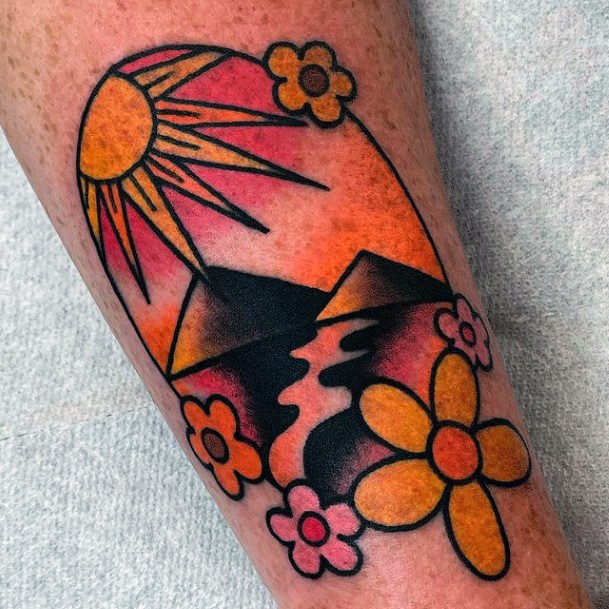

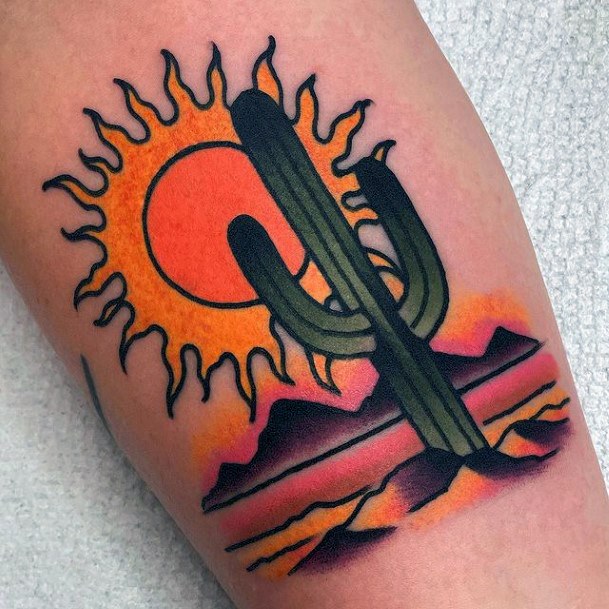
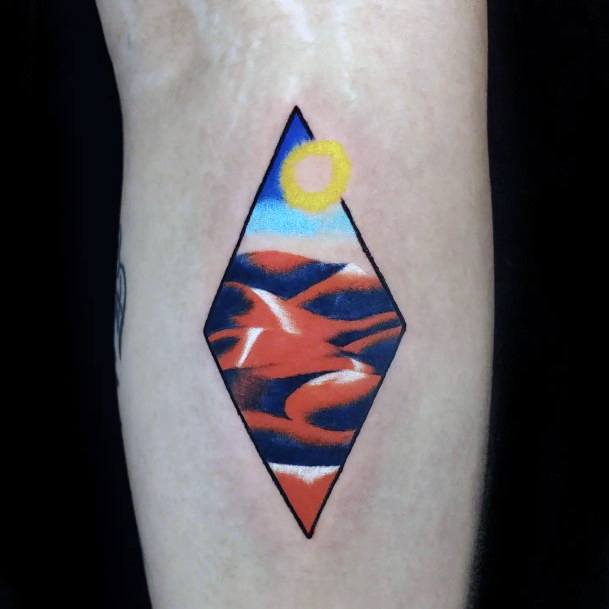
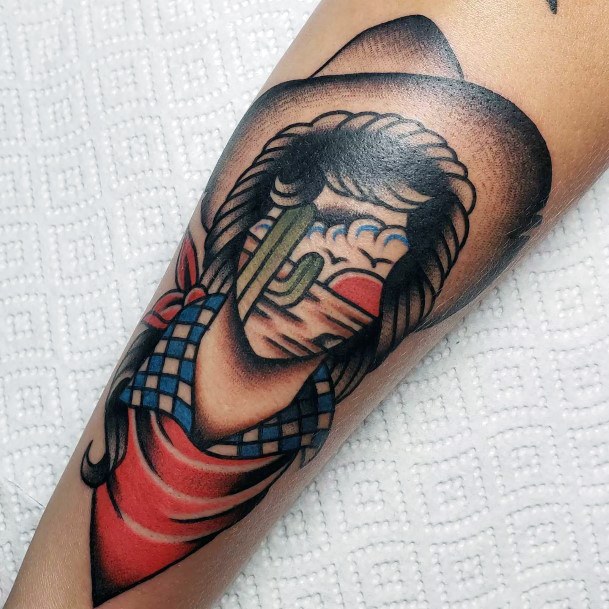
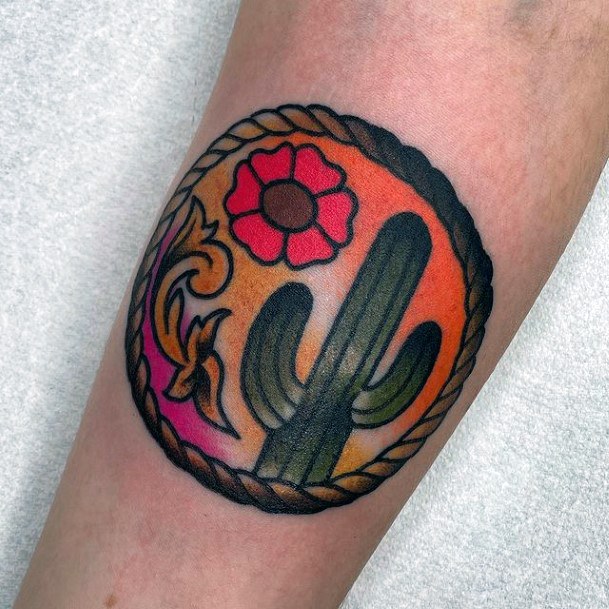

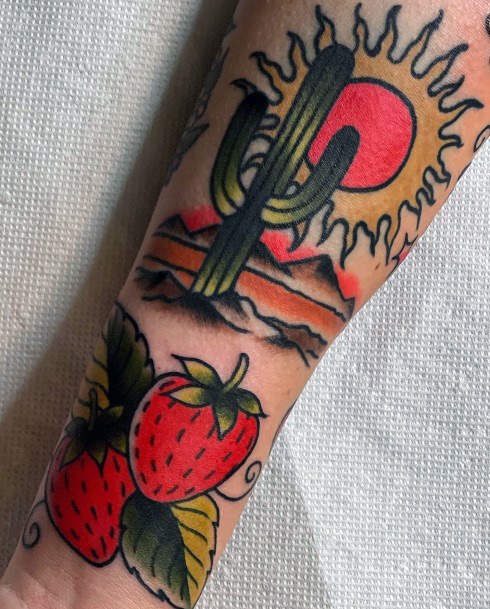
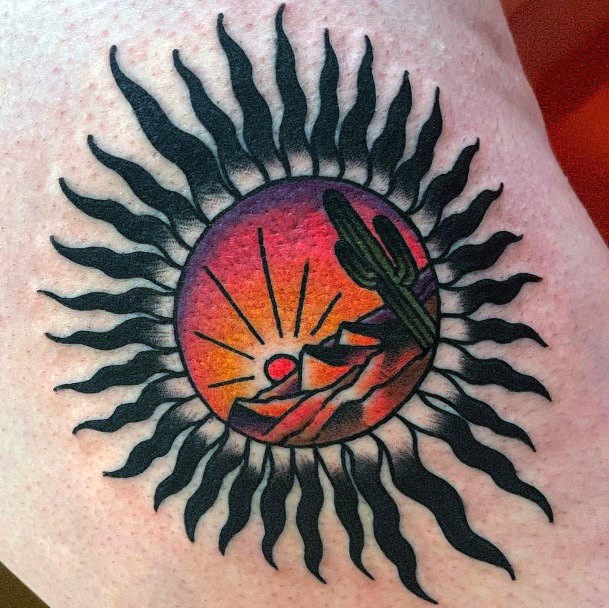
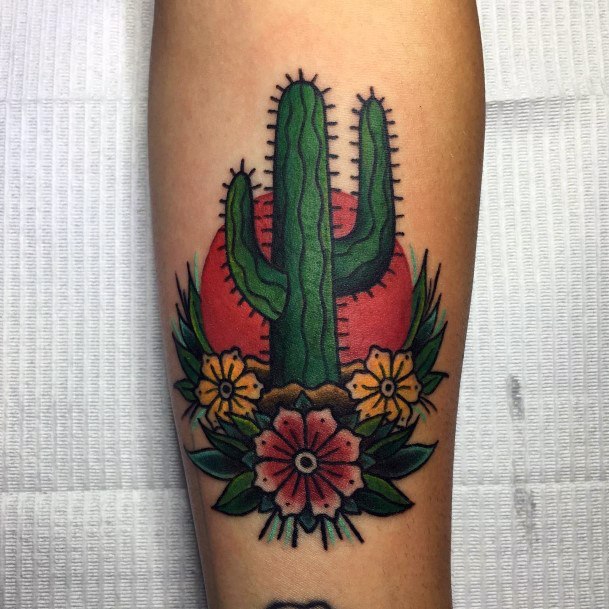
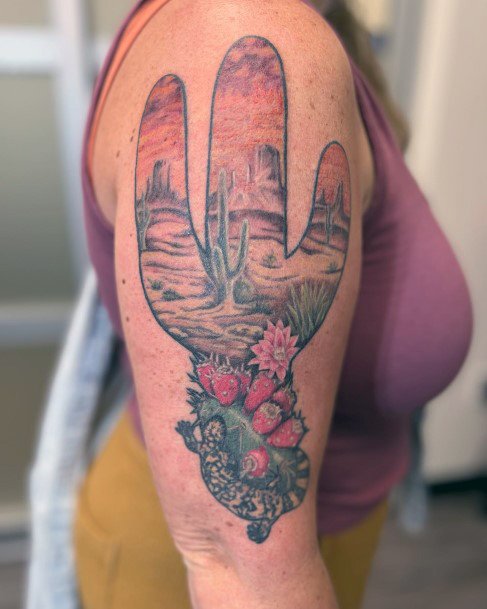

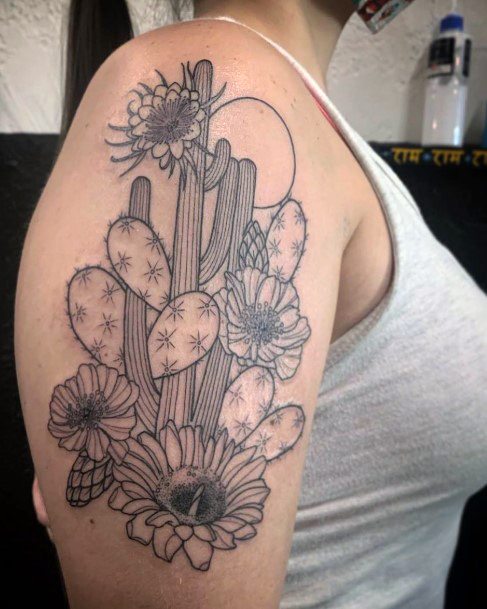

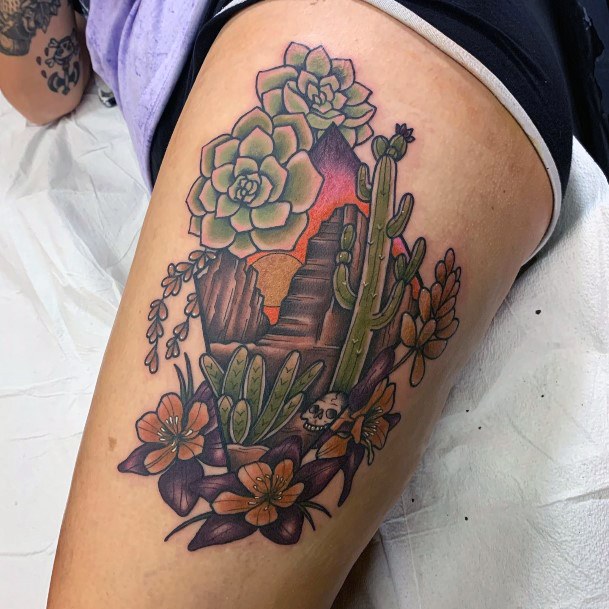
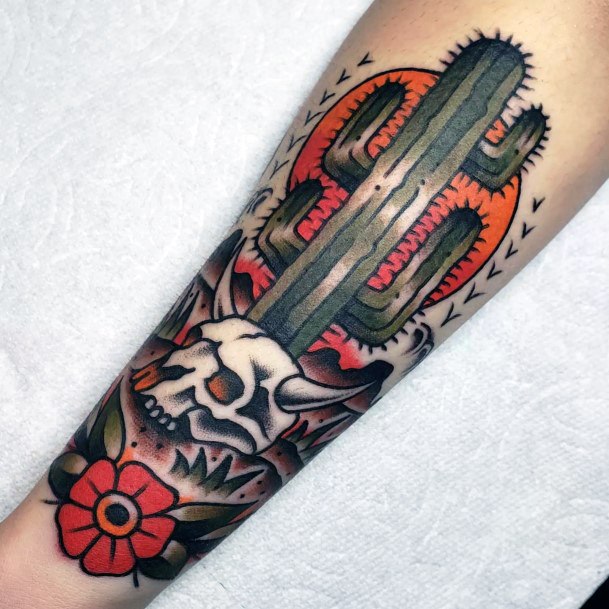
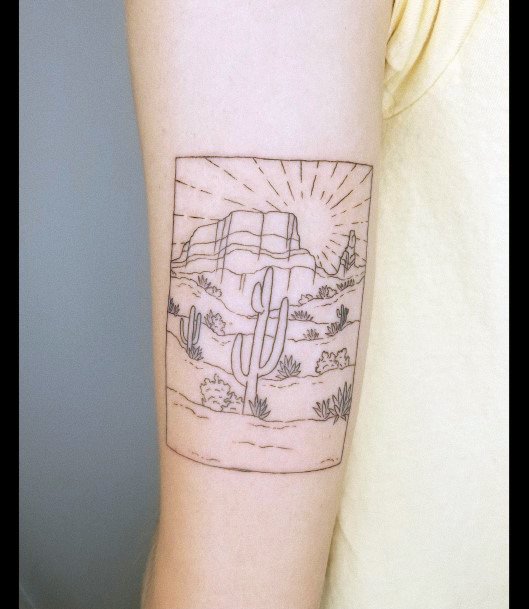
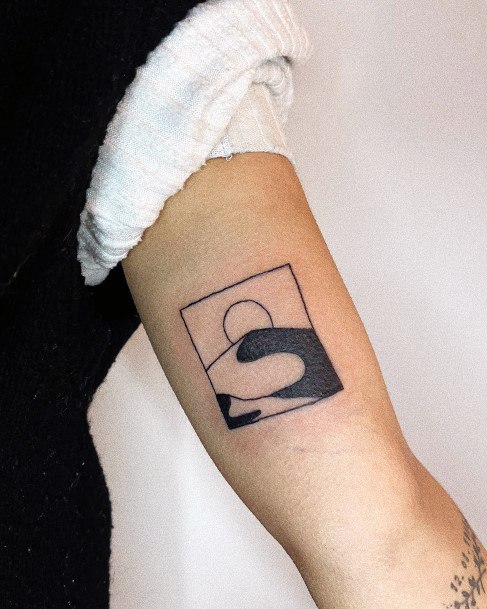
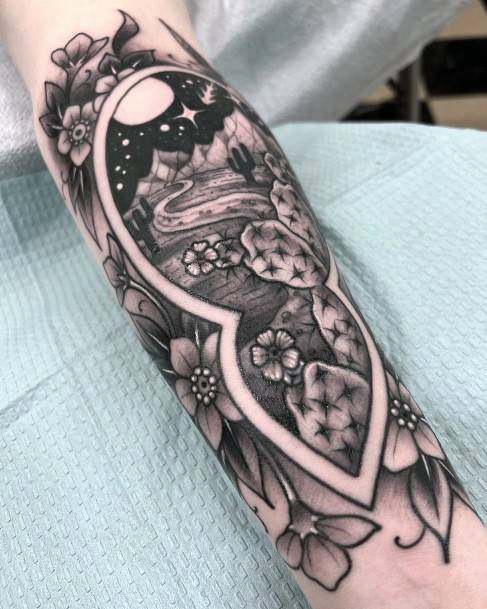
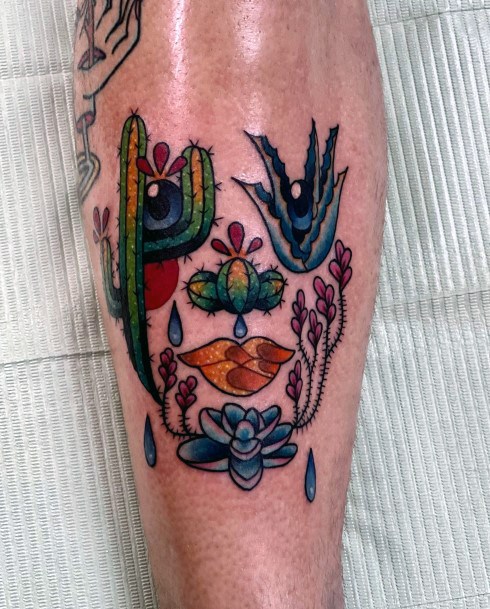

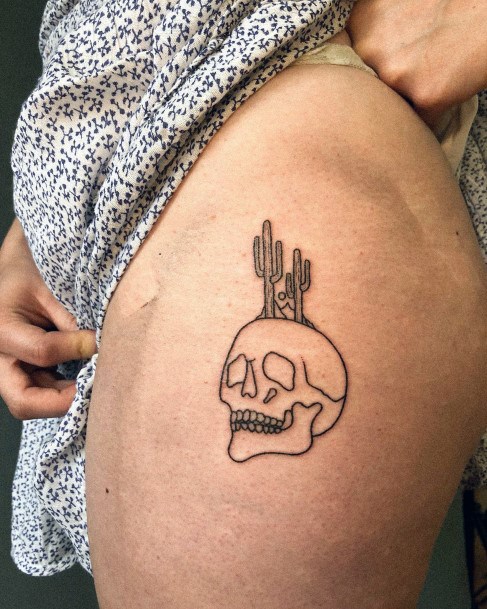
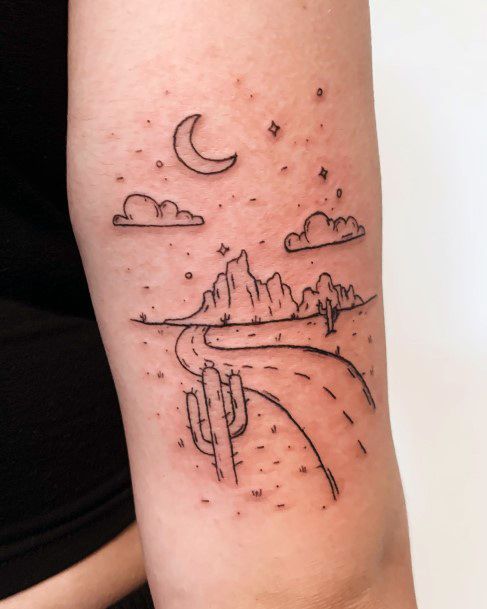
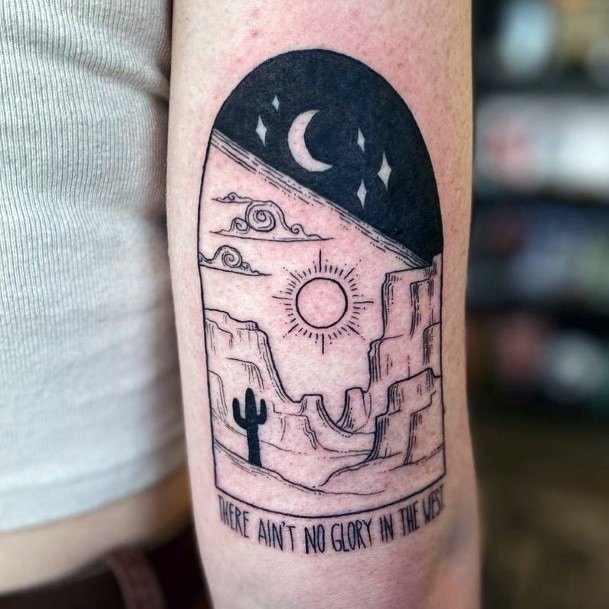
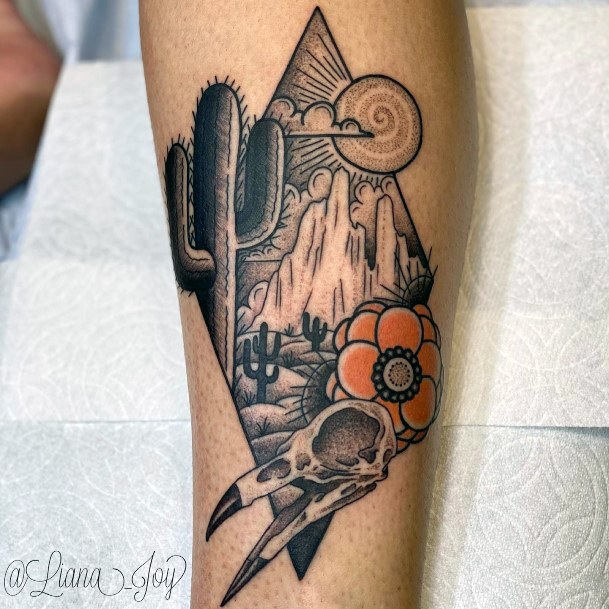
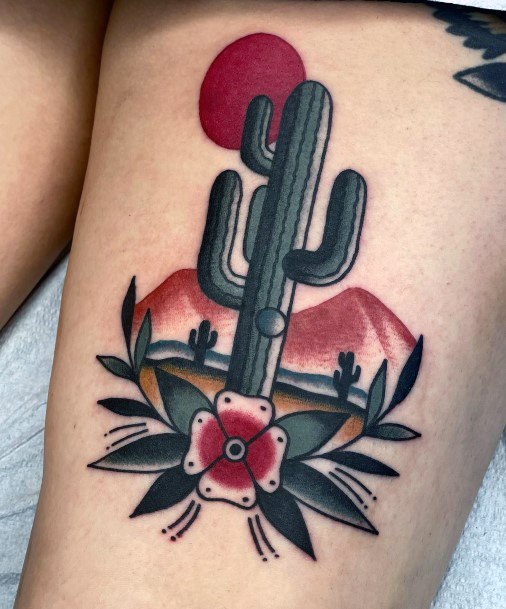
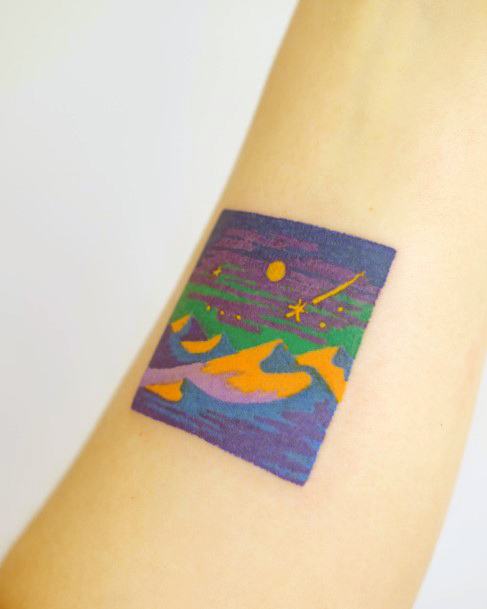
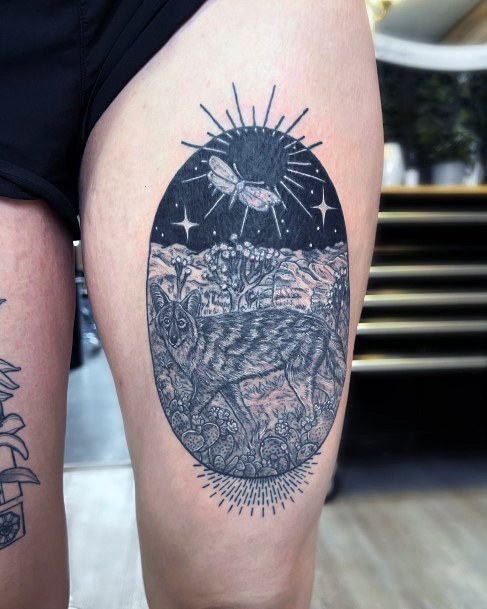
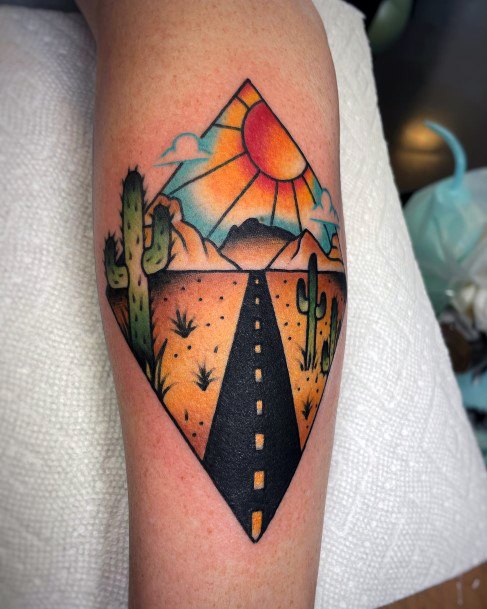
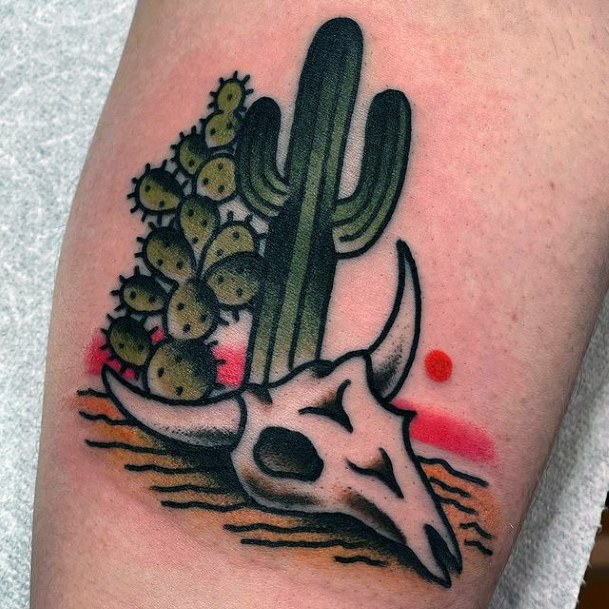
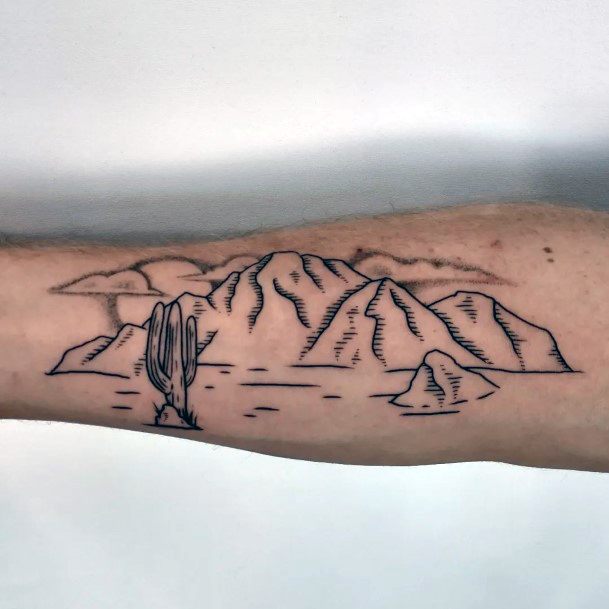
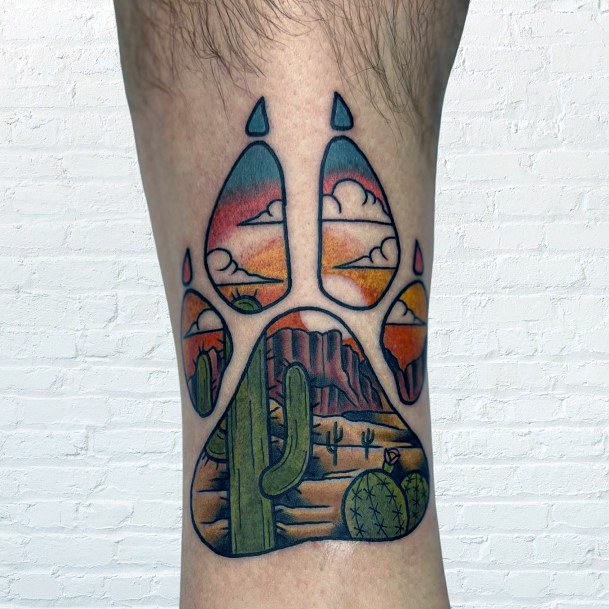
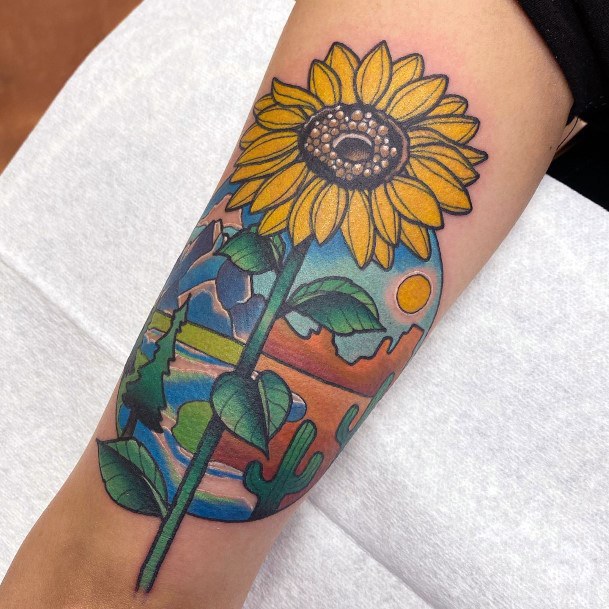
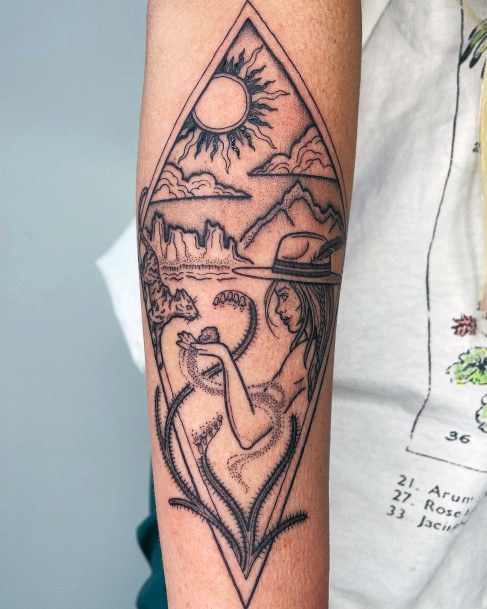




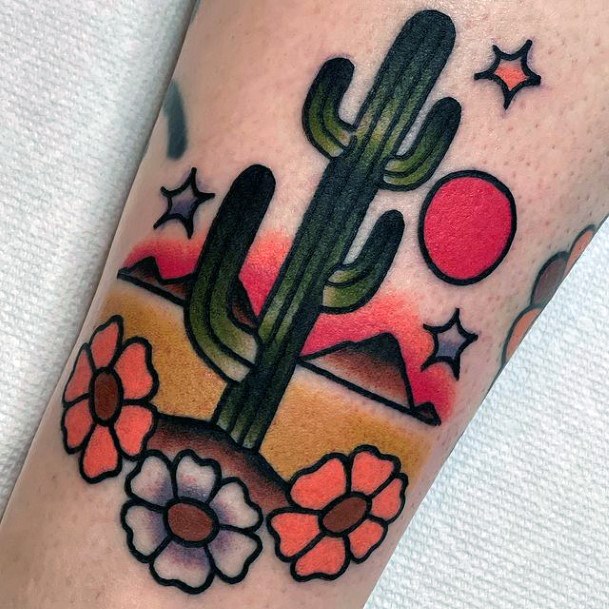
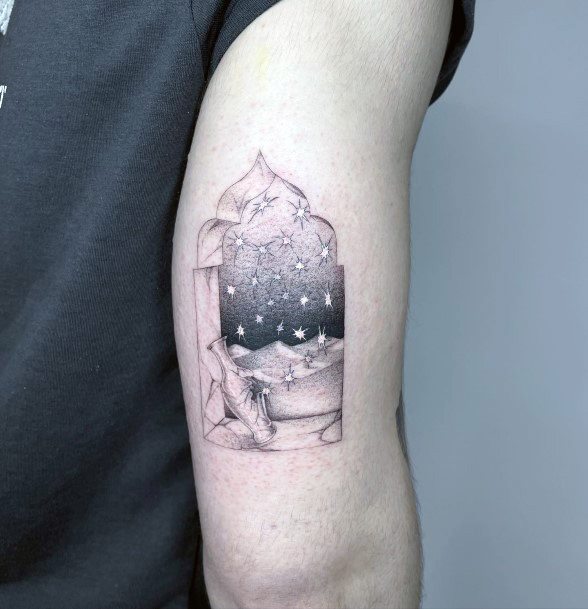

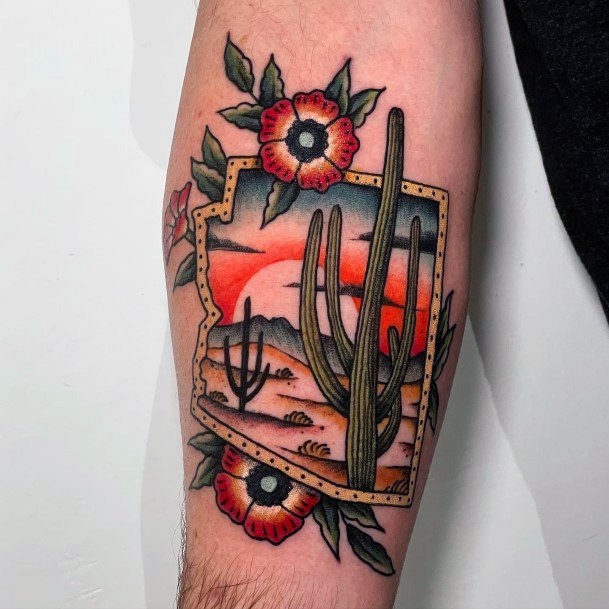


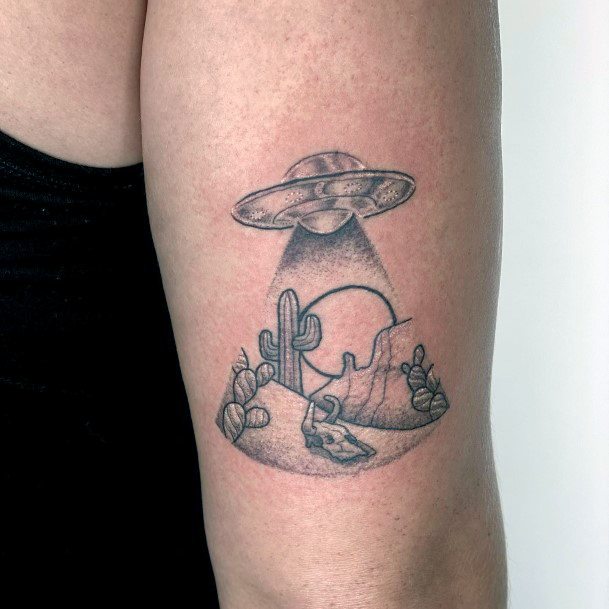


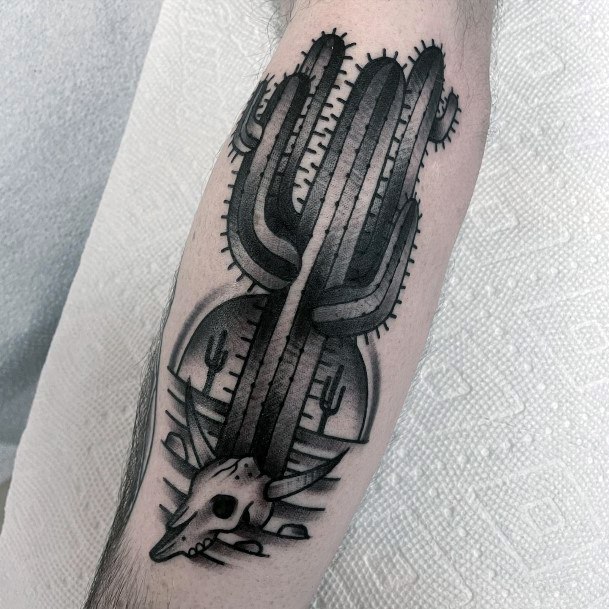
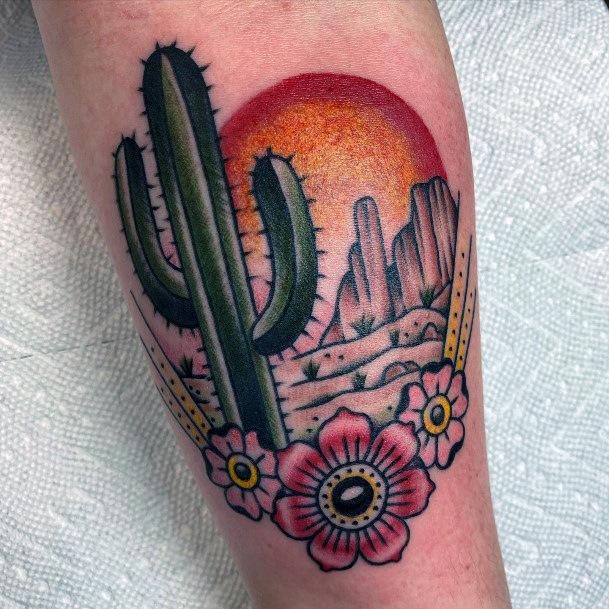
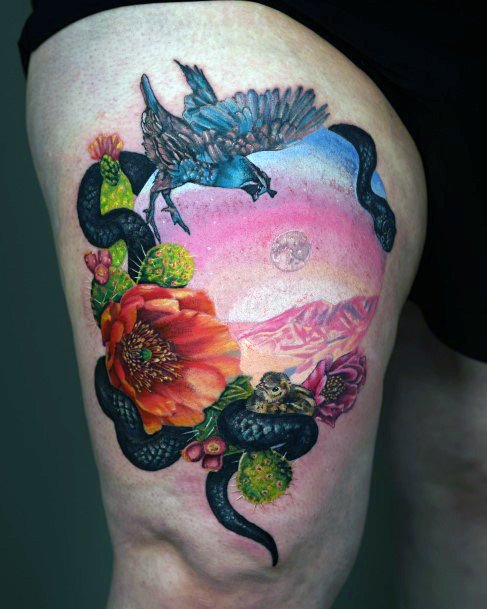
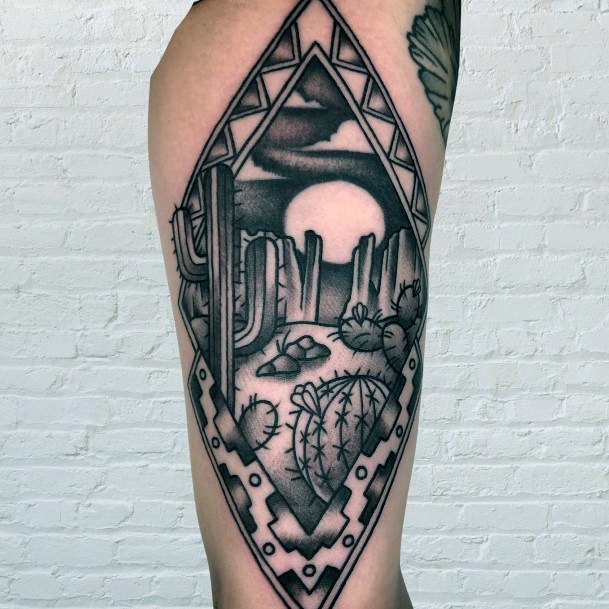
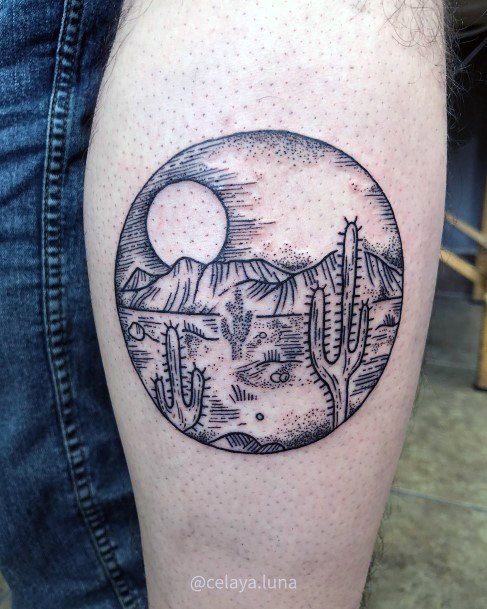

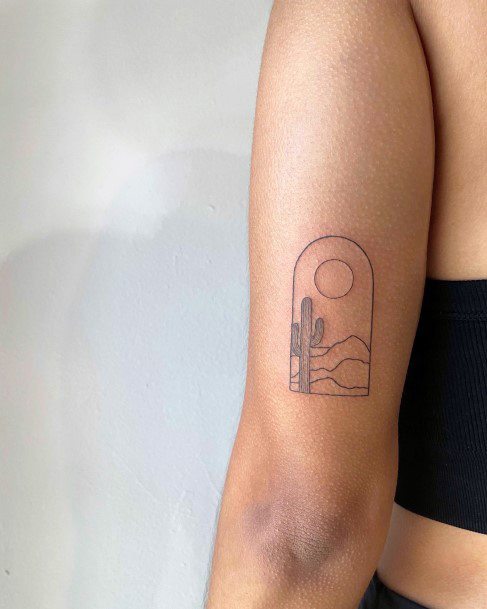

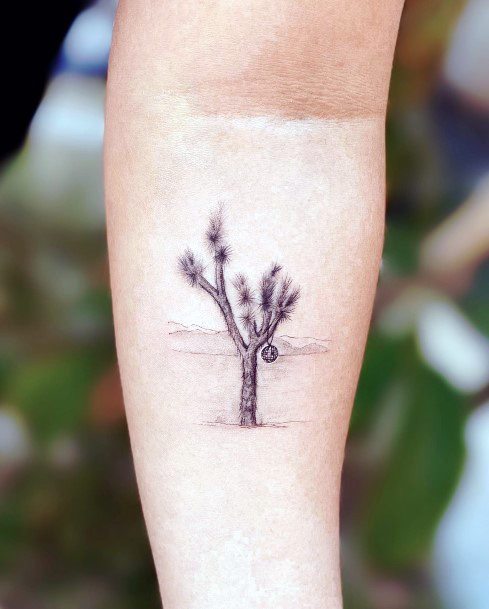
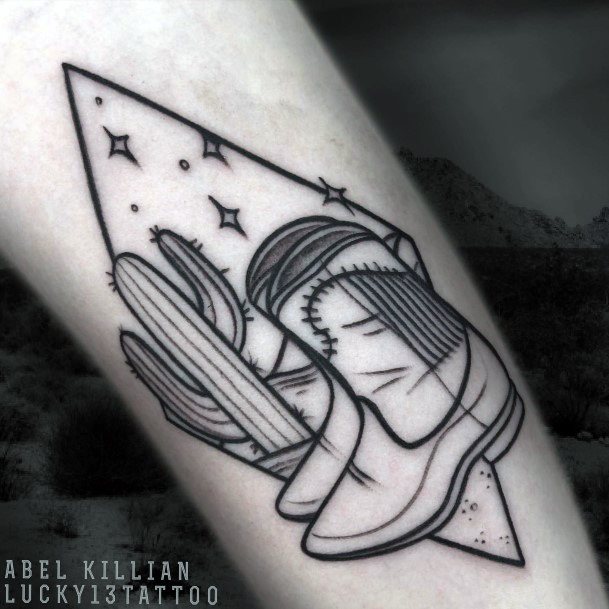
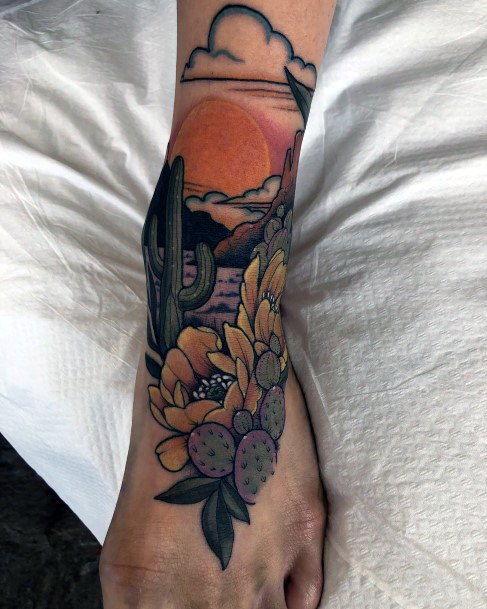
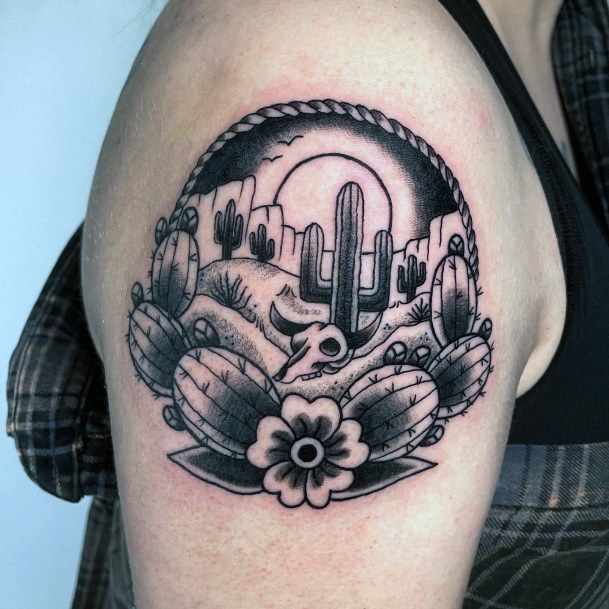
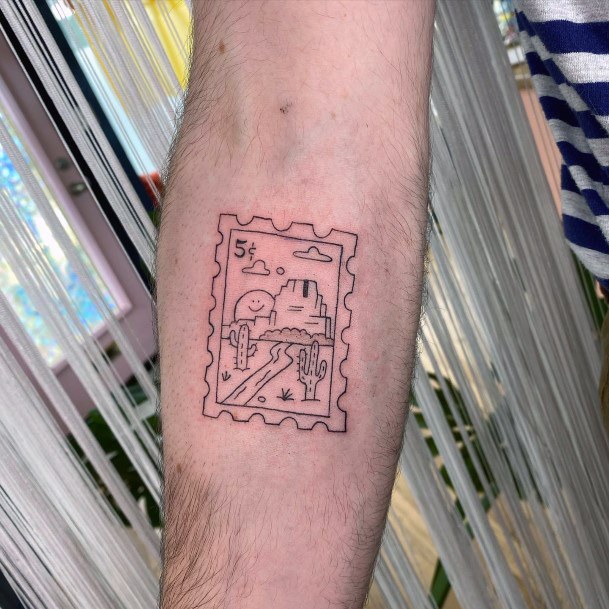
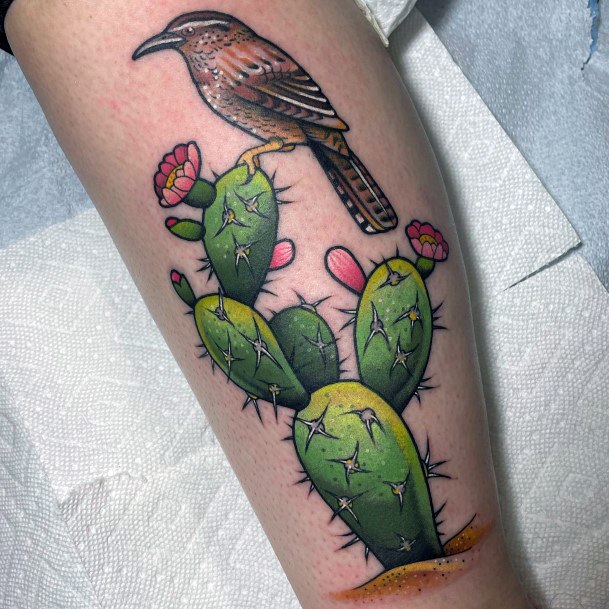

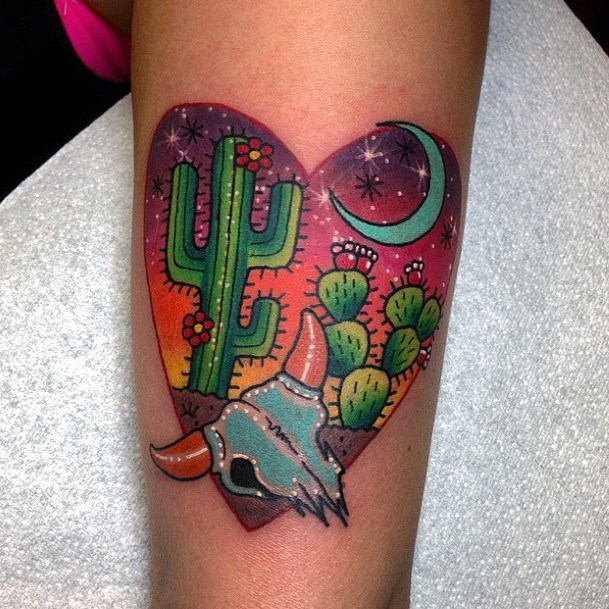
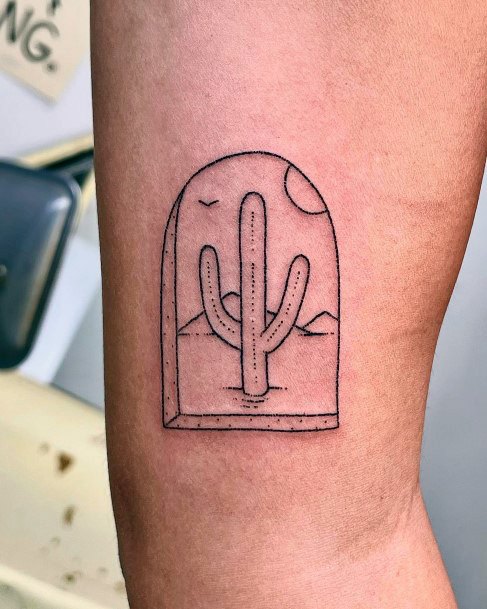
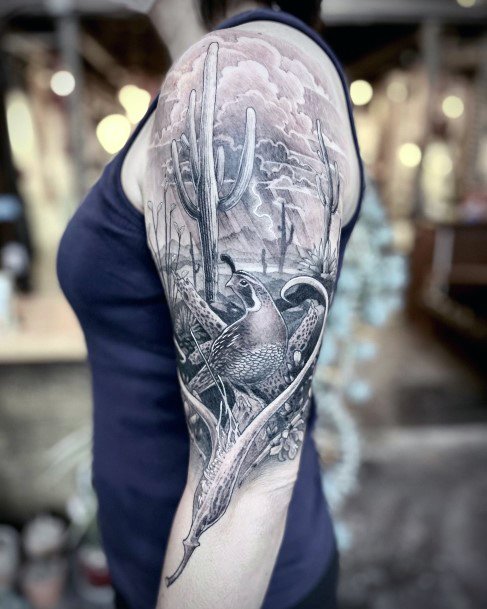


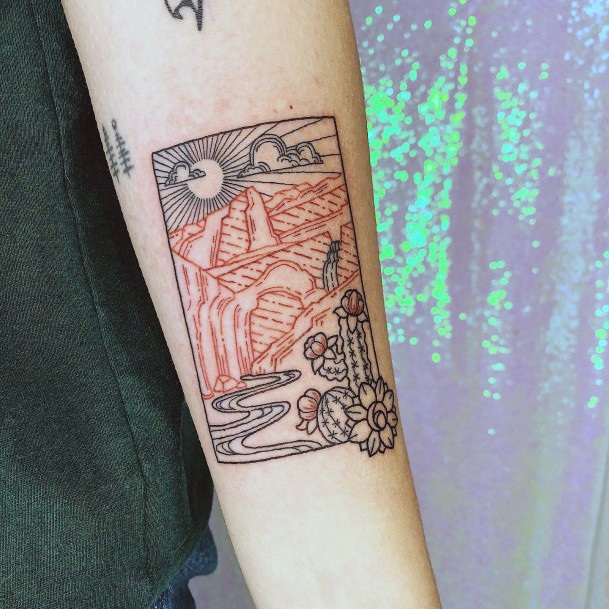
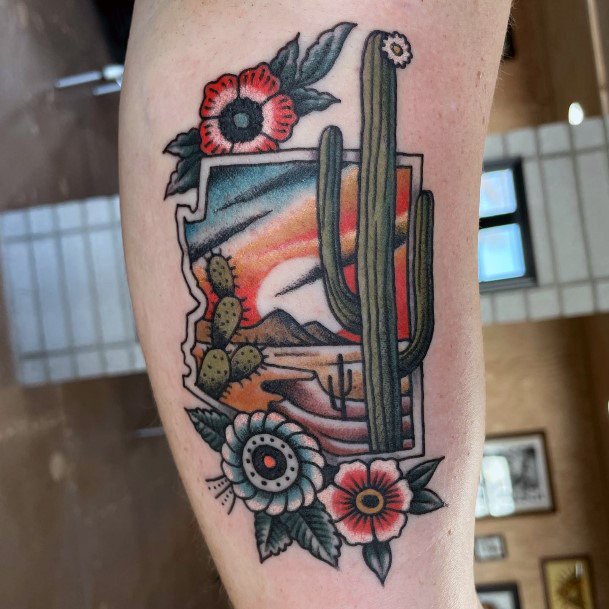

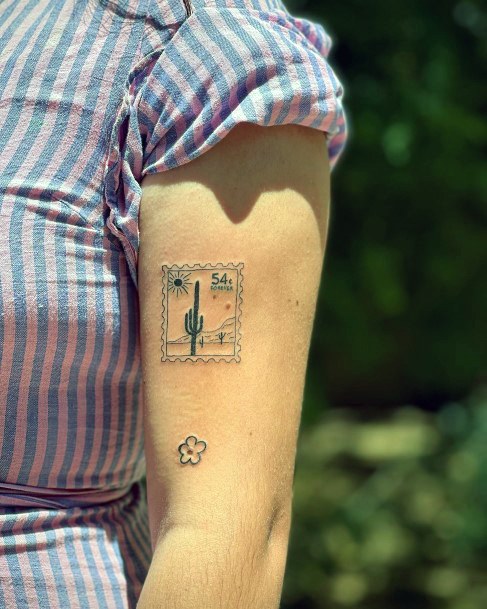
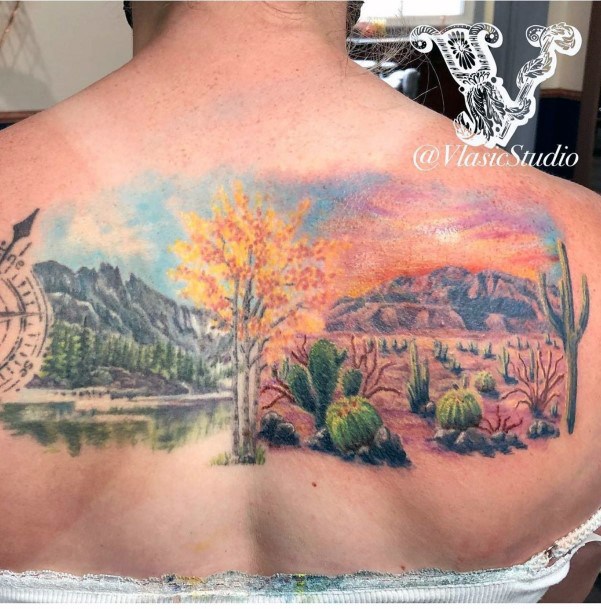
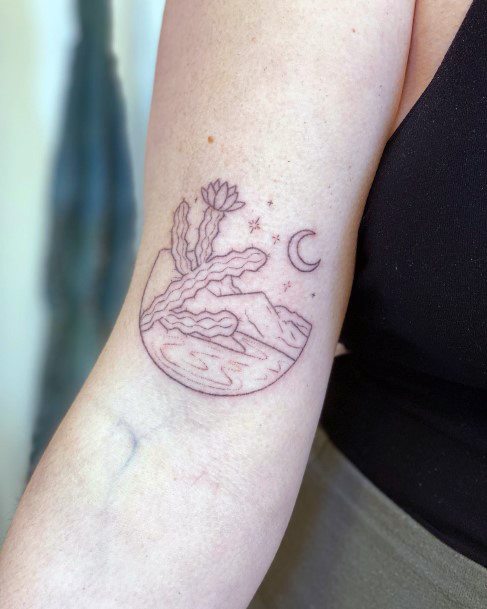


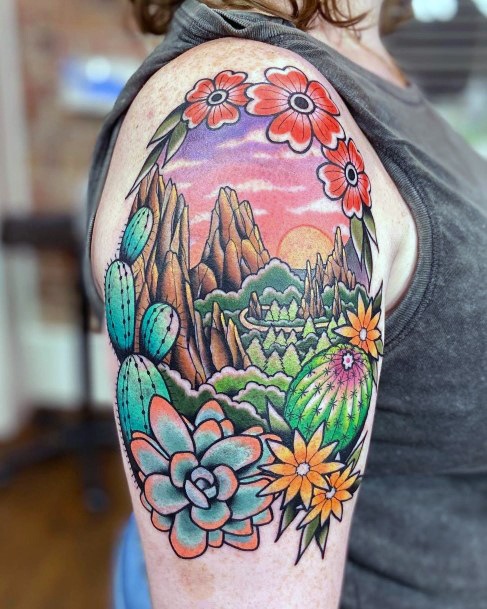
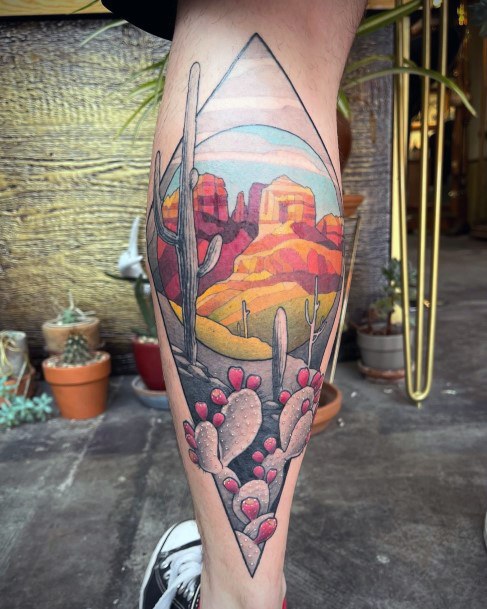
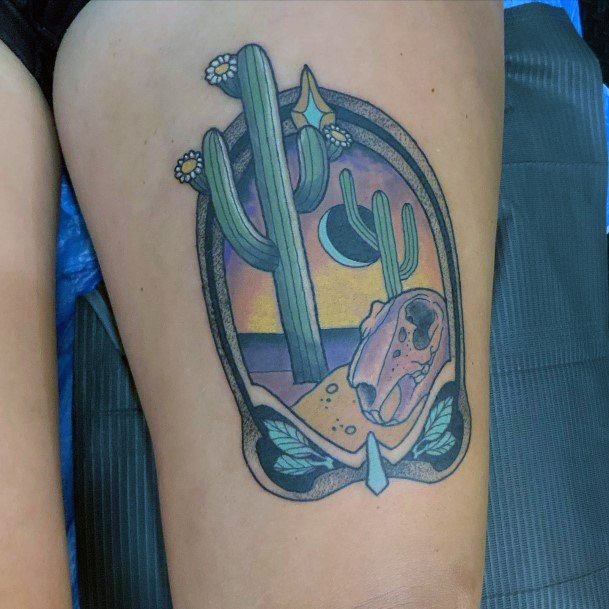
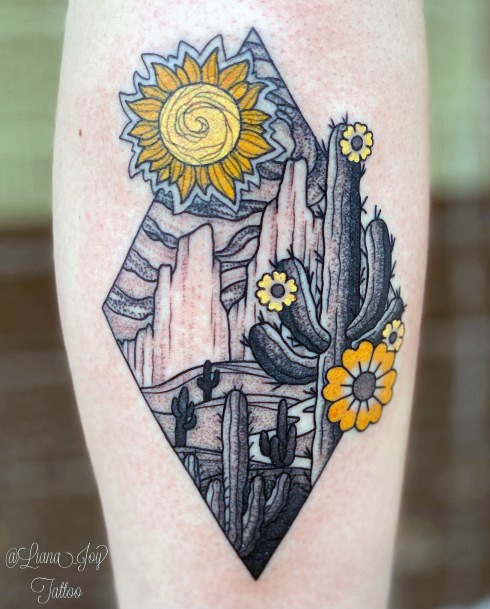
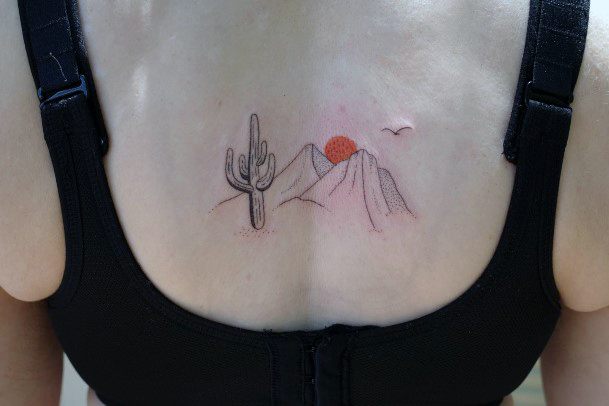

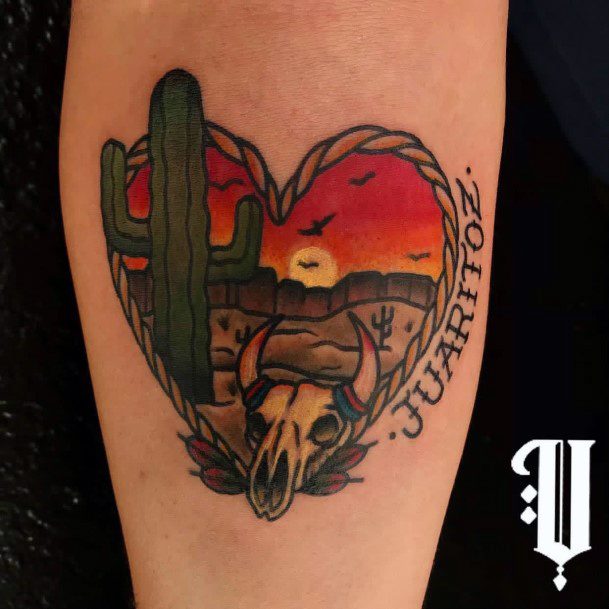

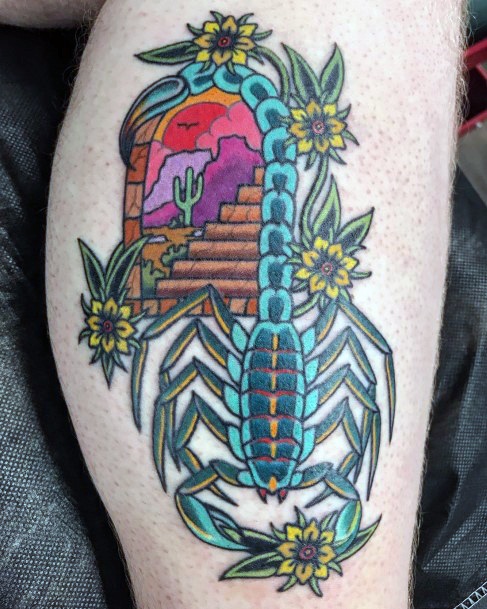
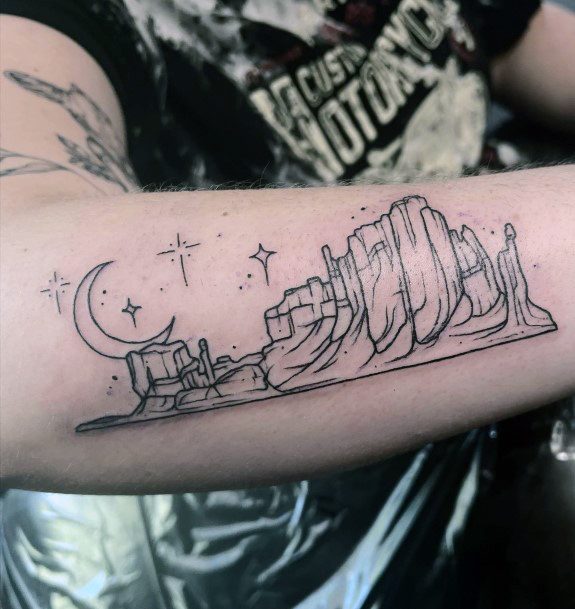
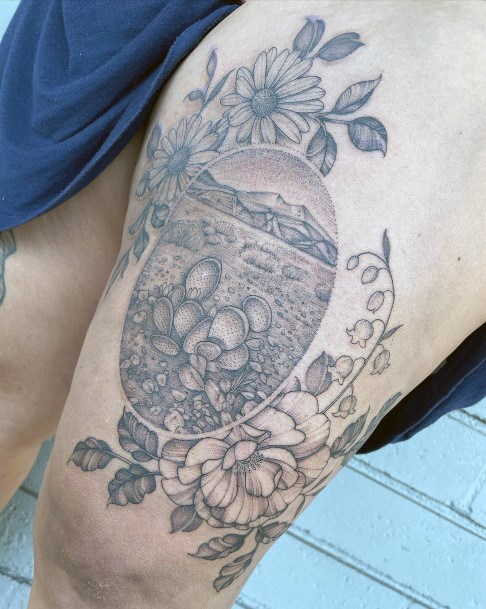

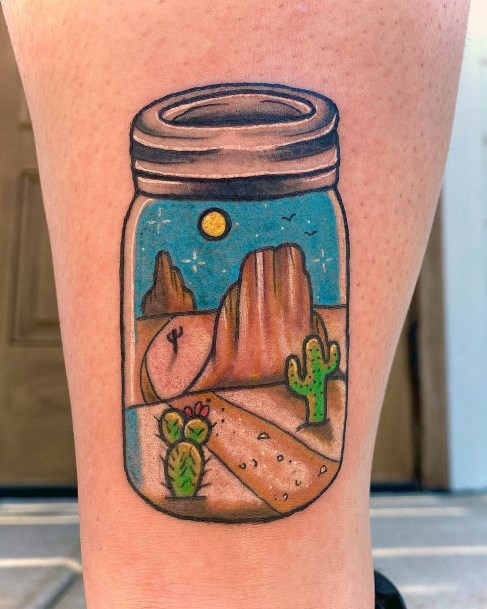
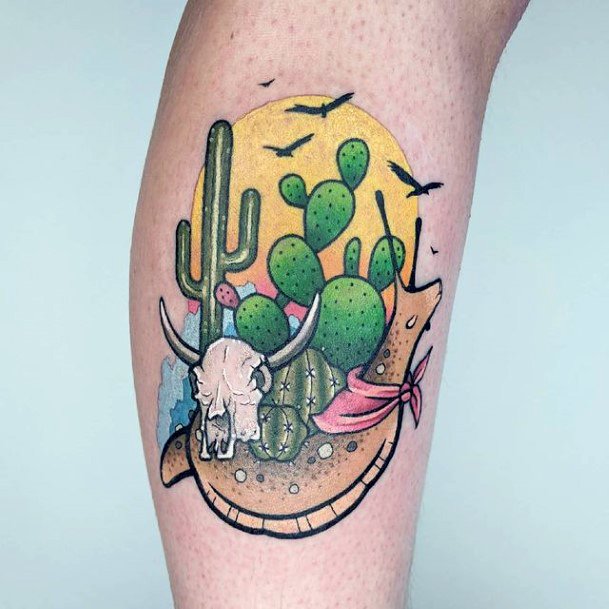
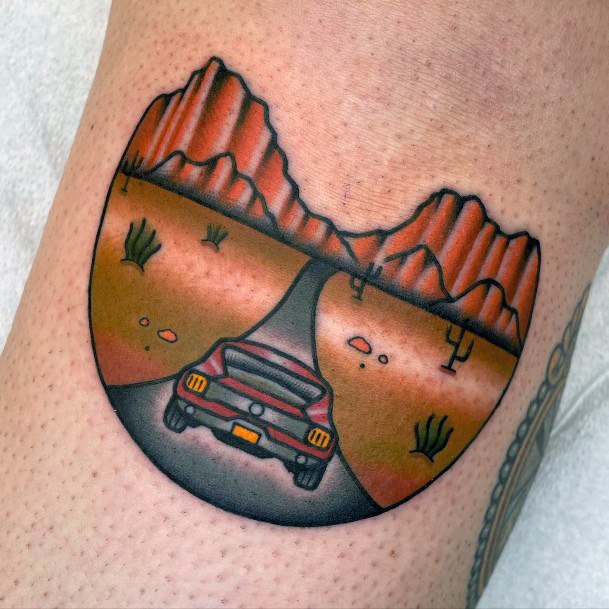
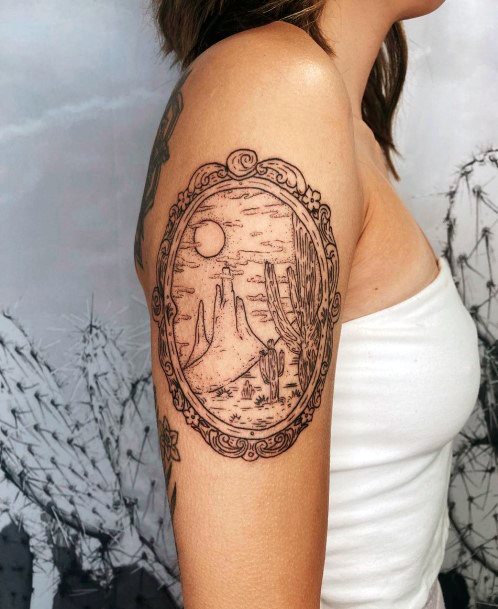

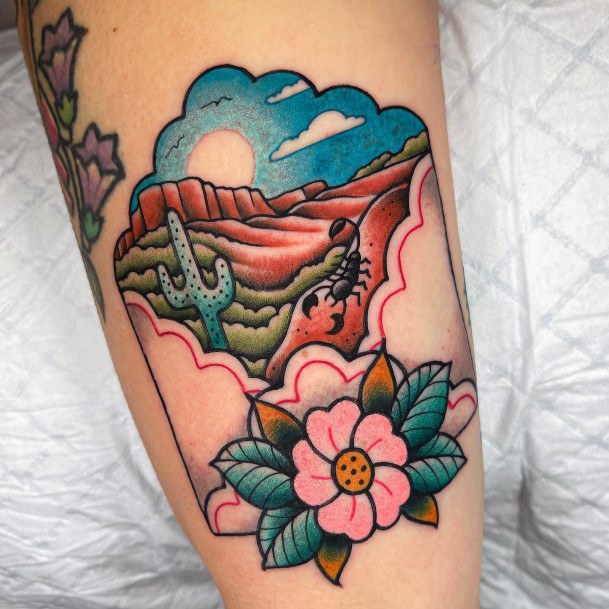
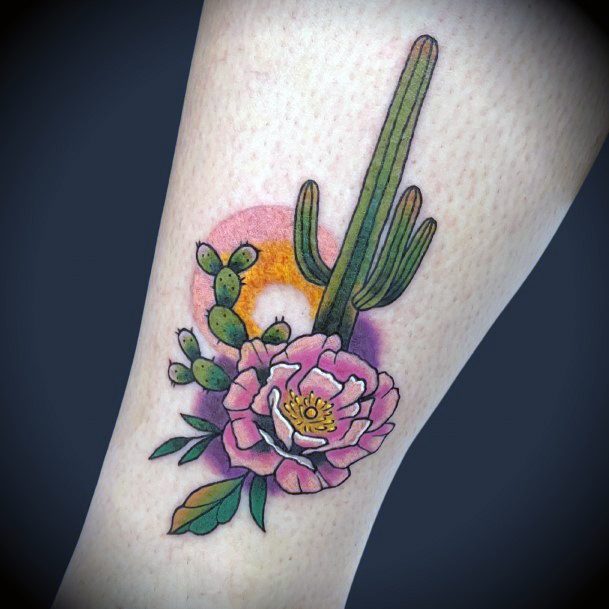
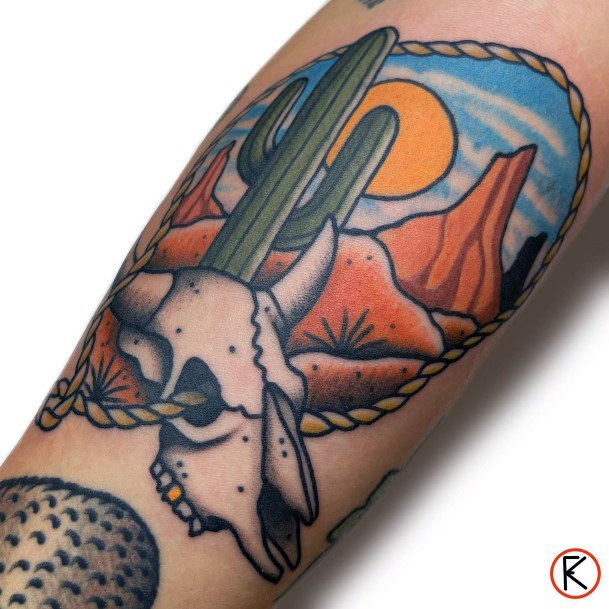
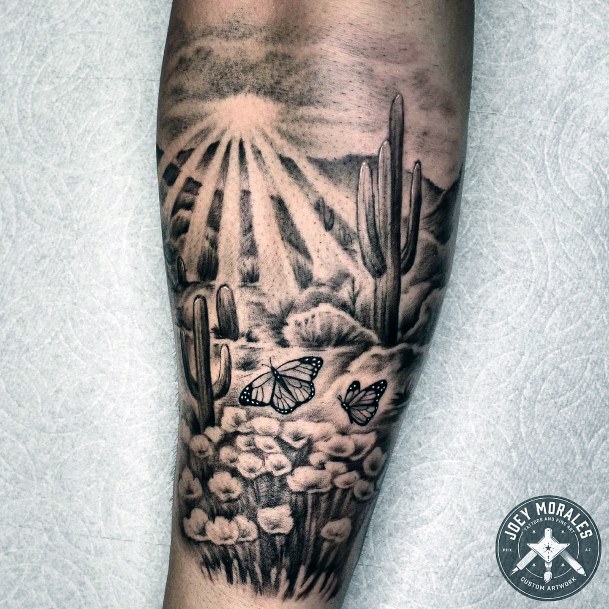
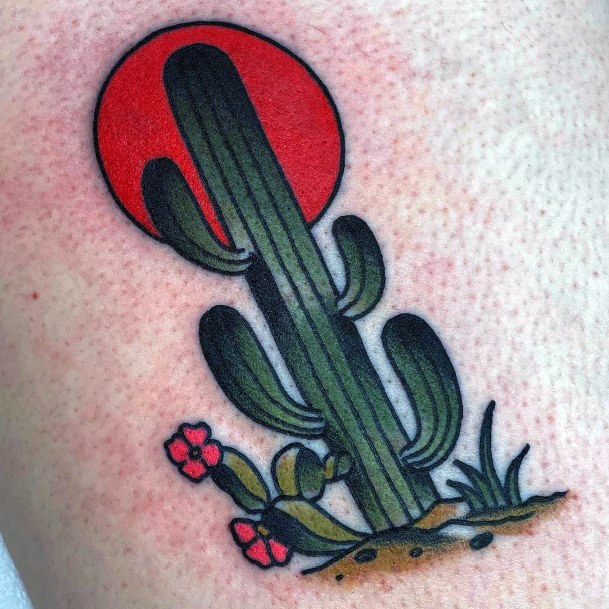
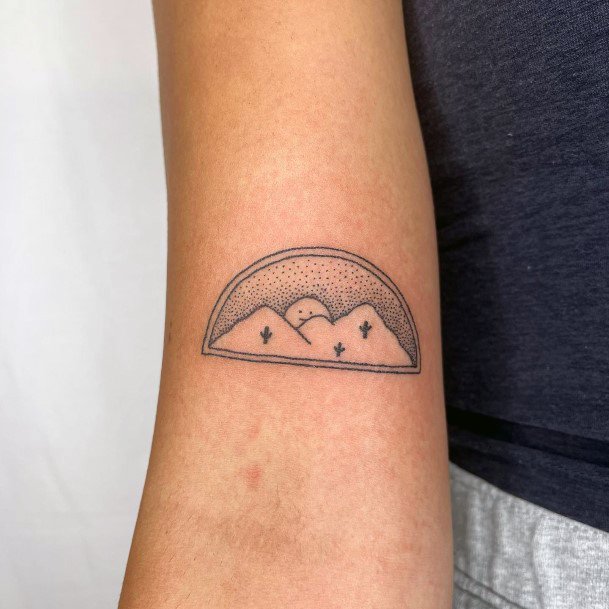
Desert tattoo meanings and symbolism:
What do Desert landscape themed designs mean and symbolize?: The desert is a powerful symbol in literature and culture, representing a wide range of ideas, emotions, and concepts. It has been used to represent loneliness, desolation, and death; but also hope, renewal, and strength. The desert has been used to evoke feelings of awe and mystery, as well as to highlight the power of nature.
The desert is often seen as a place of isolation and desolation. It can be a place of despair and hopelessness, where one can feel completely alone and disconnected from the rest of the world. This feeling of being cut off from civilization can be seen in many works of literature, such as T.S. Eliot’s “The Waste Land” and Cormac McCarthy’s “Blood Meridian”. In both works, the desert is used to represent a sense of alienation and emptiness.
At the same time, the desert can also be a place of hope and renewal. In some works of literature, such as John Steinbeck’s “The Grapes of Wrath”, the desert is used to represent a journey towards a better life. The barren landscape serves as a reminder that even in the darkest times there is still hope for a brighter future. Similarly, in Ernest Hemingway’s “The Sun Also Rises”, the desert is used to represent a journey towards self-discovery and personal growth.
The desert can also be seen as a place of strength and resilience. In many cultures it is seen as a symbol of endurance and survival in the face of adversity. This idea is explored in works such as Naguib Mahfouz’s “Midaq Alley”, where characters must confront difficult situations in order to survive in an unforgiving environment. Similarly, in Paulo Coelho’s “The Alchemist”, Santiago faces numerous challenges on his journey across the desert before ultimately finding his personal legend.
Finally, the desert can also be seen as a source of awe and mystery. Its vastness and emptiness can evoke feelings of wonderment and contemplation about life itself. This idea is explored in works such as JRR Tolkien’s “The Lord of The Rings” where characters must traverse through mysterious lands to reach their ultimate destination. Similarly, in Antoine de Saint-Exupery’s “The Little Prince” we see how the protagonist must confront his own fears while navigating through an unknown landscape filled with danger and beauty alike.
